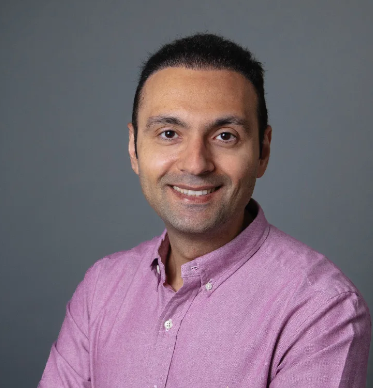Video Transcription

Mohammad Ahmadi 00:03
Good afternoon, everyone. Vertebral fractures or broken bones in the spine affect millions of lives every year, creating a significant clinical need. So far, the treatments are insufficient, which leads to unhappy and unsatisfied clinicians and patients. At Amber Implants, we have developed an innovative product, VC Fix, to change the status quo.
Mohammad Ahmadi 00:39
We have received a breakthrough designation for this device, which clearly shows the unmet need and the potential for this solution. With robust technology, enhanced IP, and a clear product roadmap, we aim to change the treatment of these types of fractures. I'm Mohammad Ahmadi, one of the founders and the CTO of this company, Amber Implants, which is located in The Hague, the Netherlands. I'm proud to present our work today and represent a group of 16 medical device enthusiasts, led by Banafsheh Sajadi as our CEO.
Every year, around 9 million people suffer from vertebral fractures. If you think about it, it is equal to a mega city like New York or London. There are two routes for this type of fracture. The first one is vertebral compression fractures, which primarily affect elderly people. As people age, the quality of their bones gets weaker and weaker. The second source of these fractures is traumatic fractures, which affect younger patients who engage in sports activities or experience car accidents or similar incidents. Most of these patients, unfortunately, are left untreated, leading to chronic pain, loss of mobility, deformation of the spine, and a decrease in quality of life.
For those who are treated, the situation is even worse after the treatment. Six months after undergoing kyphoplasty, one out of two patients returns to the hospital with either an adjacent fracture or a recurrence of back pain. I'm not even referring to the same application, which has a failure rate of up to 50%. For those who have traumatic fractures, there is no single standard solution. That's why these patients often undergo invasive operations, with surgeons being creative and usually combining different techniques like polygraphy, removing the vertebral body, and long fusion—fusing a couple of vertebrae together. For the patient, there is a long recovery time and a high infection rate.
That's why we have created VC Fix. This device has three distinctive features. The first one is the expandable part, made of titanium implants, which first lifts and then maintains the fractured vertebra. This device doesn't rely on any bone cement, eliminating all complications related to bone cement. For more traumatic fractures, this device has a pericardial screw, which provides more stability in the vertebral body. If a surgeon wants to, they can add a tulip and connect it to another vertebra for more traumatic fractures.
To summarize, this device can be used in a minimally invasive setting. The surgery time is predicted to be short for most cases, there is no need for a prolonged hospital stay, and it promotes bone growth. There is one single device for all kinds of indications, from a grandma's easy fracture to high-trauma fractures. I am very proud to bring some evidence for what I said. Last year, at exactly the same time, we started our first in-human study with 10 patients in Germany at two sites, and we concluded the study within a few months, in May 2024, with outstanding results.
The average operation time was only 17 minutes, which is half the time typically required for alternatives. There were zero device-related adverse events, which is typically 30% to 50% for such treatments. As you can see, the pain and disability dropped immediately, right after the operation, from 80% to almost zero. The market we are addressing is huge, given the number of patients. It is valued at $1.2 billion in 2024, and due to the aging population, it is expected to double in 10 years.
We are now considering the pivotal trial in Europe, and we are confident that within a few months, we can obtain FDA 510(k) clearance and enter the U.S. market, which is the biggest market in the world. Within two years, we will be able to obtain all the regulatory approvals for this device in Europe and the United States, and then a year after that, sell the device globally for all indications.
So here we stand now. We are in the process of closing a Series A funding round for $6 million. If anyone is interested, I would like to have a talk with that person after this session. With this funding, we will be able to start a pivotal trial in Europe across three countries and 10 sites. In the meantime, we will continue our regulatory activities in the U.S., obtain 510(k) clearance for some indications, and then start the post-market study in the U.S. In two years, we will be able to achieve CE marking and FDA approval for most indications of the device in Europe and the United States. After that, we will pursue Series B funding, which will enable us to scale up the company and sell the product globally.
Thank you very much. Applause.



